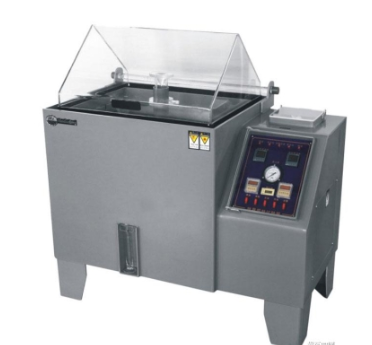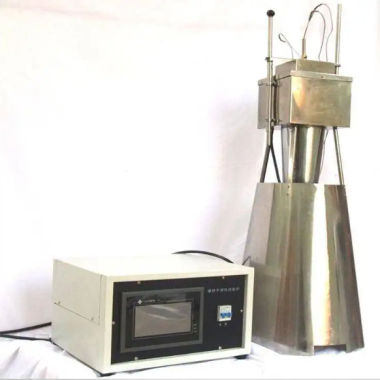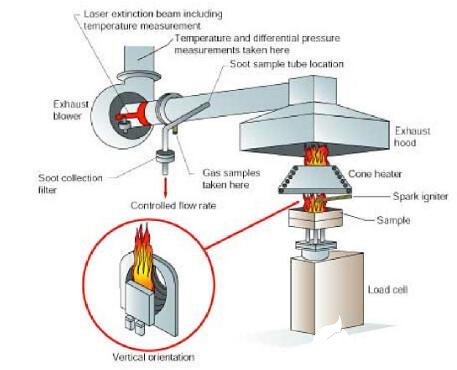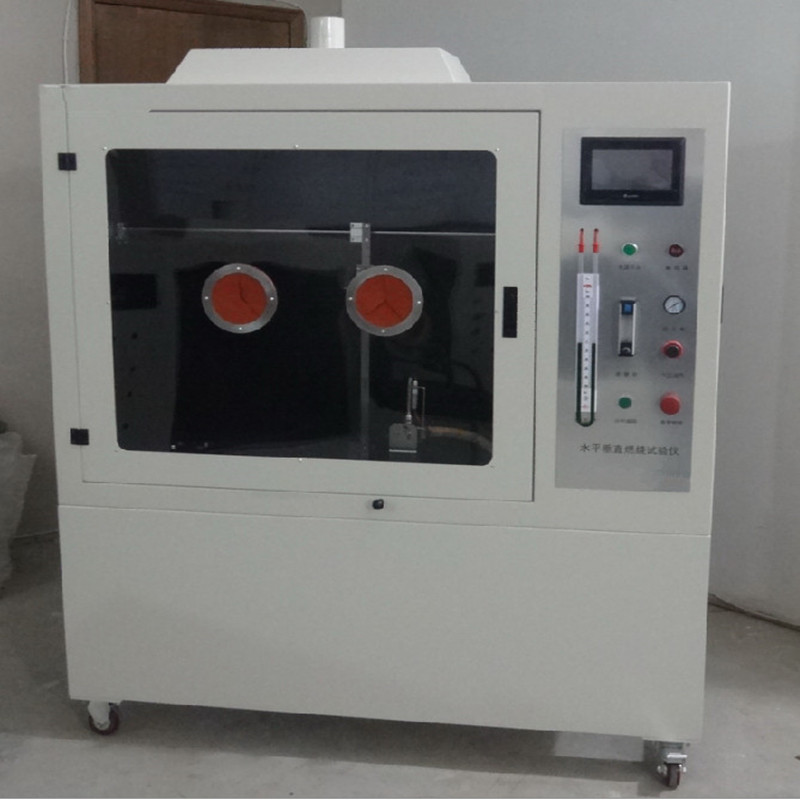What is the standard for salt spray testing?
Blog 11 10 月, 2025
In the increasingly competitive industrial market, product durability and reliability are key to earning customer trust. Whether it’s automotive parts, electronic components, outdoor building materials, or aerospace equipment, they all face an invisible enemy: corrosion. Salt spray testing simulates this harsh environment and serves as a touchstone for verifying a product’s corrosion resistance.
The Scientific Principle of a Salt Spray Tester
A salt spray test is an environmental test that primarily uses salt spray equipment to create artificial salt spray conditions to assess the corrosion resistance of products or metal materials.
The scientific principles are as follows:
Simulated Acceleration: By creating a high-concentration chloride environment, the corrosion process on the product is simulated and accelerated by marine or chlorine-containing industrial atmospheres.
Electrochemical Corrosion: Salt spray settles on the surface of the sample, forming a thin electrolyte film. This film penetrates the metal and undergoes an electrochemical reaction, causing the anode (metal) to dissolve and forming corrosion products (i.e., rust).
Evaluation Basis: Corrosion resistance is comprehensively evaluated by observing the presence of corrosion, rust, blistering, and flaking on the sample surface after the test, or by measuring the time it takes for initial signs of corrosion to appear.
Key Standards
ISO 9227 defines four classic test types to meet different evaluation needs:
Neutral Salt Spray (NSS)
This is the most basic and commonly used test. The test solution is a neutral pH (6.5-7.2) sodium chloride solution with a concentration of (5±1)% and a constant temperature of 35°C. The NSS test is suitable for large-scale, uniform performance comparison and quality control of metal plating, anodized coatings, and organic coatings.
Acetic Acid Salt Spray (AASS)
Based on the NSS solution, glacial acetic acid is added to maintain a strictly acidic pH range of 3.1-3.3. This acidic environment significantly accelerates the corrosion process and is primarily used to evaluate the corrosion resistance of decorative coatings (such as copper-nickel-chromium and nickel-chromium). Its severity is higher than that of the NSS.
Copper Accelerated Acetic Acid Salt Spray Test (CASS)
This is the fastest corrosion test. It involves adding copper chloride (0.26±0.02 g/L) to the AASS solution and raising the test temperature to 50°C. The CASS test is particularly suitable for rapid, demanding quality assessments of decorative coatings such as copper-nickel-chromium or nickel-chromium, quickly revealing potential defects in the coating.
Cyclic Corrosion Tests (such as ISO 16701. often referenced in conjunction with 9227)
While ISO 9227 primarily focuses on testing under constant conditions, modern assessments favor cyclic testing (such as ISO 16701). This method subjects samples to a variety of environments, including salt spray, dry, and wet conditions, to cycle through them. This method better simulates real-world corrosion conditions, resulting in a higher correlation with actual product service life.
Key Points in the Test Process and Result Evaluation
A test that complies with ISO 9227 must strictly control the following elements:
Test Equipment: The salt spray chamber’s structure, spray device, temperature, and humidity control must all meet standard requirements to ensure uniform and stable conditions within the chamber.
Specimen Preparation: The sample placement angle (typically 15° to 25°) is crucial, as it directly affects the deposition and flow of salt spray on the sample surface.
Solution and Conditions: The solution’s purity, concentration, and pH, as well as the chamber’s temperature and deposition volume, must be regularly calibrated and monitored.
Regarding result evaluation, ISO 9227 itself primarily specifies the test method, but the interpretation of results often requires reference to other product- or industry-specific standards. Common evaluation criteria include:
Appearance Changes: Examples include the presence of corrosion products (rust), blistering, cracking, and flaking.
Corrosion Onset Time: The time when the first signs of corrosion appear are recorded.
Corrosion Grade: The area and severity of corrosion are rated using methods specified in standards such as ISO 10289.

salt spray testing machine
Salt Spray Tester
The QINSUN Salt Spray Test Machine is used to create and maintain a salt spray (fog) test environment and test the corrosion resistance of all material surfaces after painting, spraying, electroplating, anodizing, and oiling for rust prevention.
The essence of salt spray testing lies in the precision of the spray and the realistic simulation of the environment. This equipment utilizes high-precision, advanced nozzles, allowing spray volume tolerance to be controlled within an extremely narrow range of ±0.3ml/80cm², ensuring that each specimen is exposed to a consistent amount of corrosive media per unit area. Furthermore, the system utilizes Henry’s Law for heating and humidification, which not only provides the necessary constant humidity for the laboratory but also simulates a more realistic humid environment, making the accelerated corrosion process more realistic and the test results more convincing.
Going beyond basic testing functions, this equipment’s intelligent design significantly enhances user experience and safety. It features a unique early warning system for test solution. When the test solution is only sufficient for a five-hour test, a buzzer alerts the user to refill, effectively avoiding test interruptions due to solution depletion and ensuring the continuity and value of the spray data. In addition, a comprehensive fault detection system instantly alerts users via a display or alarm light when problems occur, facilitating rapid troubleshooting and troubleshooting, significantly reducing maintenance costs and operational risks.
To meet the standards of diverse global industries, this device features a function for setting spray and rest time cycles, allowing for flexible programming of cyclic corrosion tests (CCTs) and perfectly meeting the complex testing procedures of standards such as CAPA, SAE, and ASTM. Importantly, its overall design complies with the latest and improved requirements of key international standards such as ASTM B117-03. making it a reliable quality inspection tool for the global market.
Through its comprehensive design in terms of structure, temperature control, spraying, intelligence, and standardization, this salt spray tester successfully integrates durability, testing accuracy, ease of operation, and standard compliance, providing a precise and powerful platform for corrosion resistance evaluation in modern industry.
Common Errors and Recommendations
To ensure reliable results, potential errors should be minimized. Common issues include:
Inadequate sample cleaning: Residual grease or abrasives may distort results. Incorrect salt concentration or pH: Excessively high or low salt concentrations and incorrect pH values can affect test results. Use high-quality, specialized salts and regularly check the pH.
Insufficient spray volume: The amount of salt spray collected must be within the specified range. The nozzle setting and air pressure should be checked regularly.
Incorrect sample placement angle: An angle exceeding 15–25° can result in varying corrosion loads.
Fluctuations in temperature and humidity: Ensure the test chamber’s climate control system and sensors are properly calibrated.
As a core component of industrial product quality control, salt spray testing is valuable not only for screening out substandard products but also for driving continuous optimization of product design and material processing. By strictly adhering to international standards such as ISO and ASTM, companies can establish a scientific, comparable, and reliable corrosion performance evaluation system.
However, it is important to recognize that standard salt spray testing is an accelerated simulation designed to provide relative corrosion resistance data efficiently and in a controlled manner, rather than accurately replicating the complex corrosion environments of the real world.
Therefore, when interpreting the test results, we should combine them with the actual application scenarios of the product and regard it as a key “stress test” and quality benchmarking tool, rather than an absolute yardstick for life prediction.


